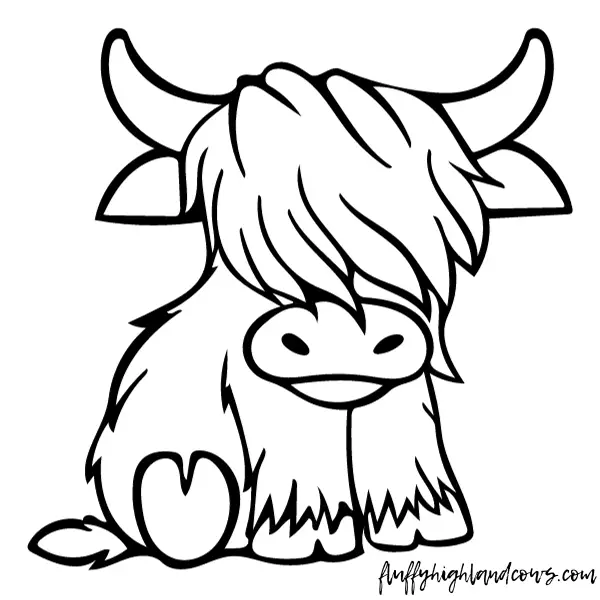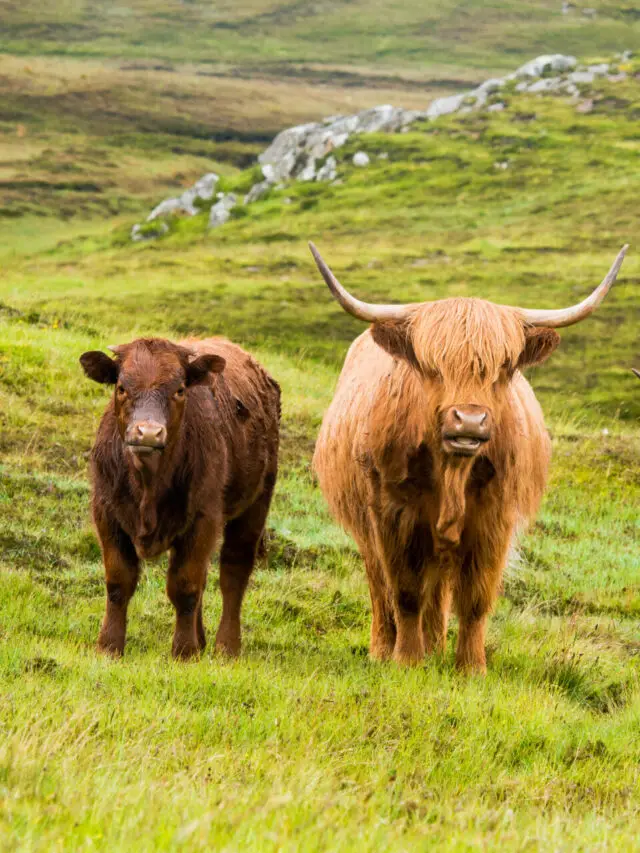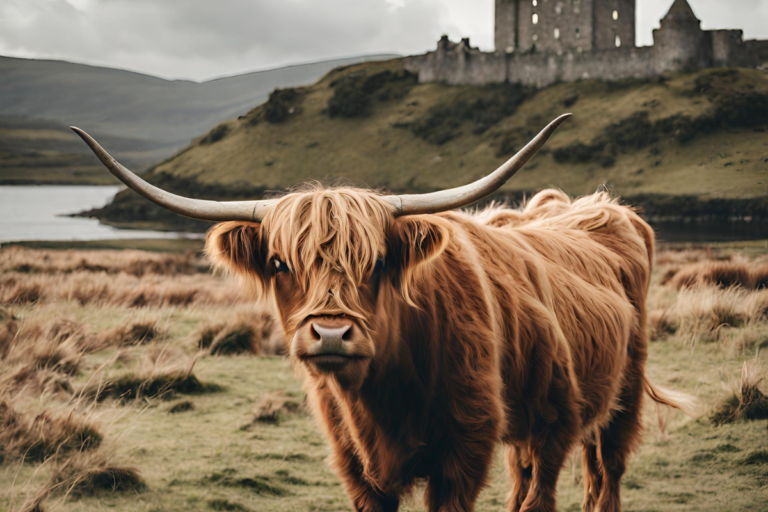8 Unique Breeds of Scottish Cows Compared & Contrasted
Scotland, known for its rich heritage and picturesque landscapes, is also home to a variety of unique cow breeds. These breeds of Scottish cows not only contribute to the agricultural richness of the region but also reflect the country’s history and adaptation to the environment.
Overview of Scottish Cow Breeds
| Breed | Coat Color(s) | Temperament | Primary Use(s) | Notable Traits |
| Aberdeen Angus | Black or Red | Docile, Easy to Manage | Beef Production | Polled (no horns), Early Maturity, Adaptable to Various Climates |
| Ayrshire | Red and White | Active, Vigorous | Dairy Production | Efficient Milk Production, Good Balance of Fat and Protein in Milk |
| Belted Galloway | Black, Red, Dun with White Belt | Docile, Friendly | Beef Production | Distinctive White Belt, Double Coat for Insulation, Lean Beef |
| Galloway | Black, Dun, Red | Hardy, Adaptable | Beef Production | Double Coat for Insulation, Natural Disease Resistance, Tender Beef |
| Highland | Varies, often Reddish-Brown | Friendly, Curious | Beef Production, Conservation Grazing | Long, Woolly Coat, Longevity, Excellent Mothers, Can Forage on Steep Lands |
| Luing | Red or Roan | Hardy, Efficient | Beef Production | Crossbreed of Highland and Shorthorn, Thrives on Poor Pastures, Low Maintenance |
| Shetland | Black, Red, Dun, Brindled | Intelligent, Independent | Dairy and Beef Production, Conservation Grazing | Small Size, Hardy, Versatile Use, Conservation Value |
| Whitebred Shorthorn | White | Docile, Good-Natured | Crossbreeding for Beef Production | Used in Crossbreeding for Quality Beef, Good Maternal Qualities, Easy Calving |
Highland Cattle
Perhaps the most iconic of Scottish breeds, Highland cattle are easily recognized by their long, shaggy coats and majestic horns. Originating from the Scottish Highlands and Western Isles, they are well adapted to the harsh and rugged terrain. Their thick coats provide insulation against the cold, damp climate, making them ideal for areas where other breeds might struggle.
Highland cattle are not just about their striking appearance; they are also known for their longevity. These cows often live longer than many other breeds, and their calves are usually born without complications.
Highland cows are also excellent mothers, fiercely protective of their young. This breed’s ability to forage on steep, mountainous lands where other breeds cannot, makes them invaluable for utilizing less fertile lands.
Characteristics:
Highland cattle are often described as friendly and curious. Despite their large horns and imposing size, they tend to be gentle giants. Their calm demeanor makes them a favorite among farmers and visitors alike.
- Coat: Long, woolly, often reddish-brown, but can vary in color.
- Horns: Both males and females have horns.
- Temperament: Known for their docile nature.
Uses:
- Primarily raised for their meat, which is lean and well-marbled.
- Occasionally used in conservation grazing to maintain natural landscapes.
Aberdeen Angus
The Aberdeen Angus, or simply Angus, is another globally recognized Scottish breed. Originating from the counties of Aberdeen and Angus in northeast Scotland, this breed is known for its beef production.
The Angus breed is renowned for its genetic purity. They have never been crossbred, which contributes to their consistent quality. This breed is also known for its early maturity, meaning they reach market weight quicker than many other breeds. Another notable feature is their adaptability; they are found in various climates worldwide, from the cold Scottish highlands to the heat of the Argentine Pampas.
Characteristics:
Angus cattle are often praised for their easy-going nature. They are generally less aggressive and easier to handle, which, combined with their lack of horns, makes them a preferred choice for farmers concerned with safety.
- Coat: Solid black or red, without horns (polled).
- Size: Medium, with a muscular build.
- Temperament: Generally docile and easy to manage.
Uses:
- Highly valued for beef production due to the quality and marbling of the meat.
- Popular in crossbreeding programs to improve beef quality in other herds.
Ayrshire
Ayrshires are primarily dairy cows, originating from the County of Ayr in southwest Scotland. They are known for their efficiency in milk production, particularly in less ideal farming conditions.
Ayrshire cows are not just productive but also efficient. They are known for their ability to convert grass into milk effectively, making them particularly valuable in pasture-based dairy systems. Their milk is not only high in volume but also in quality, with an ideal balance of protein and fat, perfect for cheese-making.
Characteristics:
These cows are often characterized as spirited and vigorous. They are active and can be more independent compared to other dairy breeds. Their energetic nature is sometimes seen as a challenge but also as a sign of their robust health.
- Coat: Red and white, with a distinct pattern.
- Size: Medium-sized with a robust constitution.
- Temperament: Active and vigorous.
Uses:
- Primarily used for milk production.
- Known for producing high-quality milk with a good balance of fat and protein.
Galloway
The Galloway breed, originating from the Galloway region in Southwest Scotland, is another notable beef breed. They are particularly known for their ability to thrive in wet and cold climates.
Galloway cattle are one of the oldest and purest of our native cattle breeds. They have a double coat of hair—a soft undercoat and a coarse outer coat—which provides excellent insulation against harsh weather. This breed is also known for its natural resistance to diseases and parasites, making them a low-maintenance choice for farmers.
Characteristics:
Galloways are often described as resilient and stoic. They are not as attention-seeking as some other breeds but are known for their steady and reliable nature. Their ability to thrive in tough conditions speaks to their hardy and uncomplaining character.
- Coat: Generally black, but can also be dun or red. They have a thick, curly coat.
- Size: Smaller and more compact than other beef breeds.
- Temperament: Hardy and adaptable.
Uses:
- Primarily raised for beef.
- Their meat is known for being tender and flavorful.
Belted Galloway
The Belted Galloway, often affectionately known as “Belties,” is a striking breed distinguished by its unique white belt that encircles its midsection. Originating from the Galloway region in Southwest Scotland, this breed is well adapted to grazing in rough, hilly landscapes.
Belted Galloways are not just known for their distinctive appearance; they are also prized for their hardiness and ability to efficiently convert poor foraging into high-quality beef. They are capable of thriving in harsh weather conditions, thanks to their double coat of long hair and soft undercoat.
Characteristics:
Belted Galloways, with their distinctive white belts, are as unique in personality as they are in appearance. Known for their calm and docile nature, they often exhibit a friendly disposition, making them a favorite among farmers and visitors.
- Coat: Black, red, or dun with a distinctive white belt.
- Temperament: Known for their docile nature and good maternal instincts.
Uses:
- Primarily raised for their lean and flavorful beef.
- Often used in crossbreeding to improve the hardiness and meat quality of other breeds.
Luing
The Luing breed, pronounced “Ling,” is a testament to Scottish cattle breeding expertise. Developed in the 1940s on the Isle of Luing by crossing Highland and Shorthorn cattle, this breed combines the hardiness of the Highland with the beef qualities of the Shorthorn.
Luings are particularly valued for their ability to thrive on poor upland pastures and in tough environmental conditions. They are known for their longevity, fertility, and ease of calving, making them a favorite among beef producers.
Characteristics:
The Luing breed, a product of careful breeding, displays a robust and industrious character. Luings are often described as efficient and no-nonsense animals, embodying a practical and steadfast approach to their daily grazing and living.
- Coat: Typically red or roan, known for their thick skin and coat.
- Temperament: Hardy, efficient, and adaptable.
Uses:
- Raised primarily for beef production.
- Appreciated for their low maintenance and efficient grazing.
Shetland
Shetland cattle, originating from the Shetland Isles, are a small, hardy breed known for their ability to survive in challenging environments. They are one of the smallest British cattle breeds, reflecting the limited resources of their native islands.
These cattle are versatile, being used historically for both milk and meat production. They are known for their longevity, good health, and ease of calving. Shetland cattle are also recognized for their conservation value, often used in grazing projects to maintain biodiversity.
Characteristics:
Shetland cattle are often characterized by their intelligence and adaptability, traits necessary for survival in the challenging conditions of their native lands. Despite their size, they exhibit a strong and independent spirit, combined with a gentle and cooperative nature when interacting with humans.
- Coat: Varied, including black, red, dun, and brindled.
- Temperament: Intelligent, docile, and resilient.
Uses:
- Traditionally used for both dairy and beef production.
- Valued for conservation grazing and maintaining landscapes.
Whitebred Shorthorn
The Whitebred Shorthorn is a distinctive breed, primarily bred as a beef animal. Originating from the border regions between Scotland and England, this breed is known for its ability to produce high-quality crossbred offspring, especially when crossed with Galloway cattle.
The Whitebred Shorthorn plays a crucial role in beef production systems, particularly in upland areas. They are appreciated for their good temperament, ease of handling, and maternal qualities.
Characteristics:
The Whitebred Shorthorn is known for its amiable and easy-going temperament. These cattle are often praised for their docility and ease of handling, making them a preferred choice in mixed farming operations. Their gentle nature extends to their maternal instincts, as they are attentive and caring mothers, reflecting a nurturing and protective personality.
- Coat: White, with a sturdy and well-balanced frame.
- Temperament: Docile, easy to manage, and good-natured.
Uses:
- Primarily used in crossbreeding programs to produce high-quality beef cattle.
- Valued for their maternal abilities and ease of calving.
Each breed, with its unique characteristics and adaptations, contributes significantly to Scotland’s agricultural landscape and heritage.








